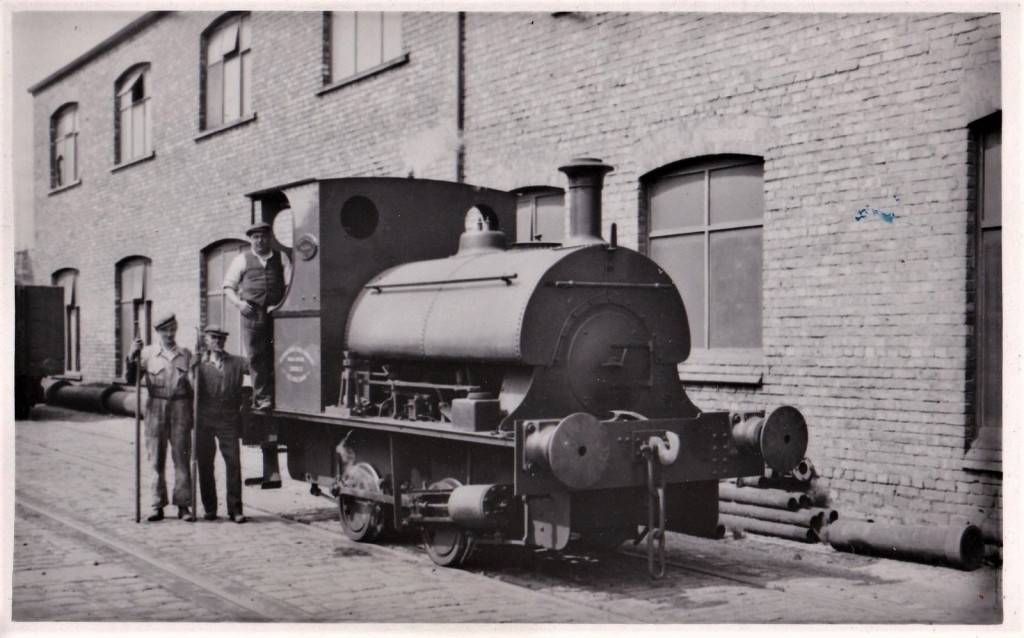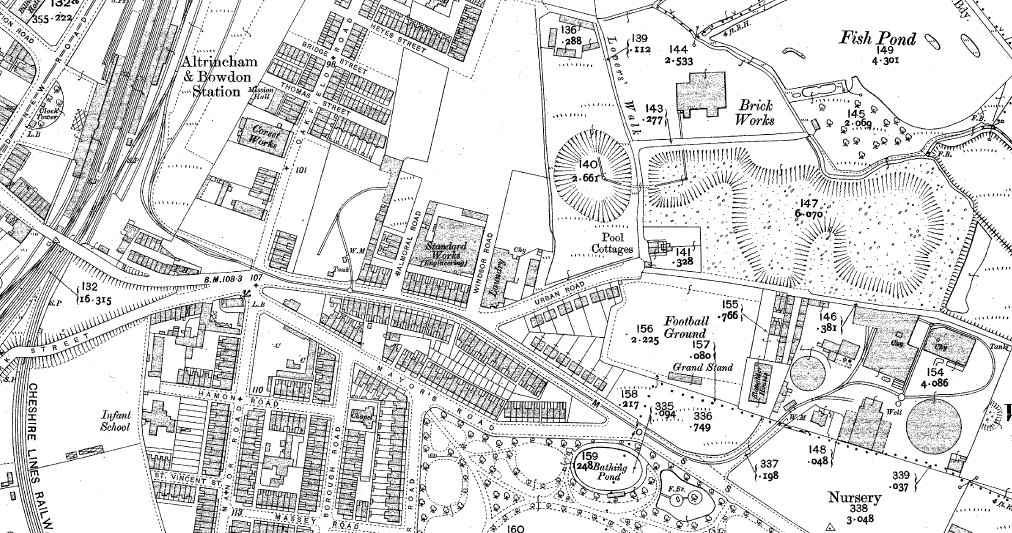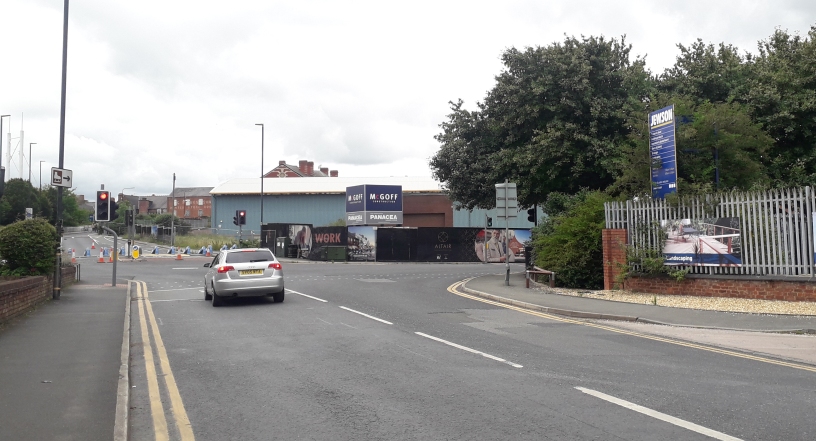
Did you know that there was once a light railway in Altrincham? This ran from the station sidings to Altrincham Gas Works north of Stamford Park, along the middle of Moss Lane. The gas works had been established here in 1847, although the first gas works in Altrincham was behind the Market Tavern in the Old Market Place and dated from 1844. The light railway, or tramway, was established under the Altrincham Gas Act of 1893, as a single track of standard gauge. It cost £1,820 to build, was in operation by 1895 and for many years was horse-drawn.
The tramway ran from the sidings at Altrincham Station for roughly a third of a mile (c. 500m) to the gas works on Moss Lane, where a series of sidings ran around the site. The light railway carried coal for the gas works which was used in the production of ‘town gas’. The construction of the tramway enabled the ‘rude and rough track across the muddy moss’ to be replaced with a more formal road paved with stone setts. A steam road wagon, built by Sentinel of Shrewsbury in 1924, was employed from 1933 to pull the coal trucks. In 1943 a steam locomotive was purchased from Peckett & Sons of Bristol. This was Peckett’s W/No. 2034, a ‘Yorktown’ type 0-4-0ST, and the new tank engine was named ‘Arthur E Potts’, after one of the company directors. A second locomotive was purchased in 1947, a four-wheel vertical boiler engine built by Sentinel (W/No. 9375).
The Altrincham Gas Works was nationalised in 1949 when it became part of the North West Gas Board. Re-organisation saw the ending of gas production at Altrincham in June 1957, and with it the closure of the light railway in December of that year. The Moss Lane site became the headquarters for the North West Gas Board (opened in 1965), although the rails were removed in 1958 as part of this re-organisation. The whole site was decontaminated and redeveloped as housing in the early 2000s, removing any industrial archaeology remains. Altrincham Station sidings closed in October 1966, but as late as 1978 some of the tramway tracks for the light railway could still be seen.
There’s a fine introductory article on the history of the line and its limited rolling stock by Malcolm Millichip and Douglas Robinson in the April 2000 edition of the magazine ‘Railway Bylines’. Furthermore, Altrincham History Society have published in their Journal various articles on the gas works of the town (there were three), the National Gas Archive in Warrington holds material on the Altrincham Gas Works, the Stamford Artchives in John Rylands Library on Deansgate, Manchester, holds material, and the Trafford Local Studies Library in Sale holds images and oral reminiscences of the light railway. However, there is no proper archaeological study of the line.

STAG are therefore looking for any early 20th century photographs of the route, especially during the steaming years of 1933 to 1957. We are also interested in any post-1957 images that show road works along Moss Lane, since it’s unclear whether the tracks were removed from the whole route. Walking the line of the tramway during lockdown in June 2020 showed that a band in the middle of Moss Lane is crumbling away along much of the tramway route. This is revealing the early stone setts and suggests that some of the tracks may survive under the tarmac. There are also some stone setts in the south-eastern corner of Jewson’s building yard, where in the early 20th century a short branch of the tramway, no more than c. 50m long, ran north from the main line west of the present Balmoral Road. There was also a weighing machine and water tank by this branch. Precisely why is unclear. With the site of the Altrincham Station railway sidings, and the western terminus of the gas tramway, due for redevelopment in the new few years, it would be good to be able to remind Altrincham of its more obscure but significant railway heritage, when trains ran down the middle of the road, rather like the 21st century trams now do in parts of the city region.

Comments are closed.